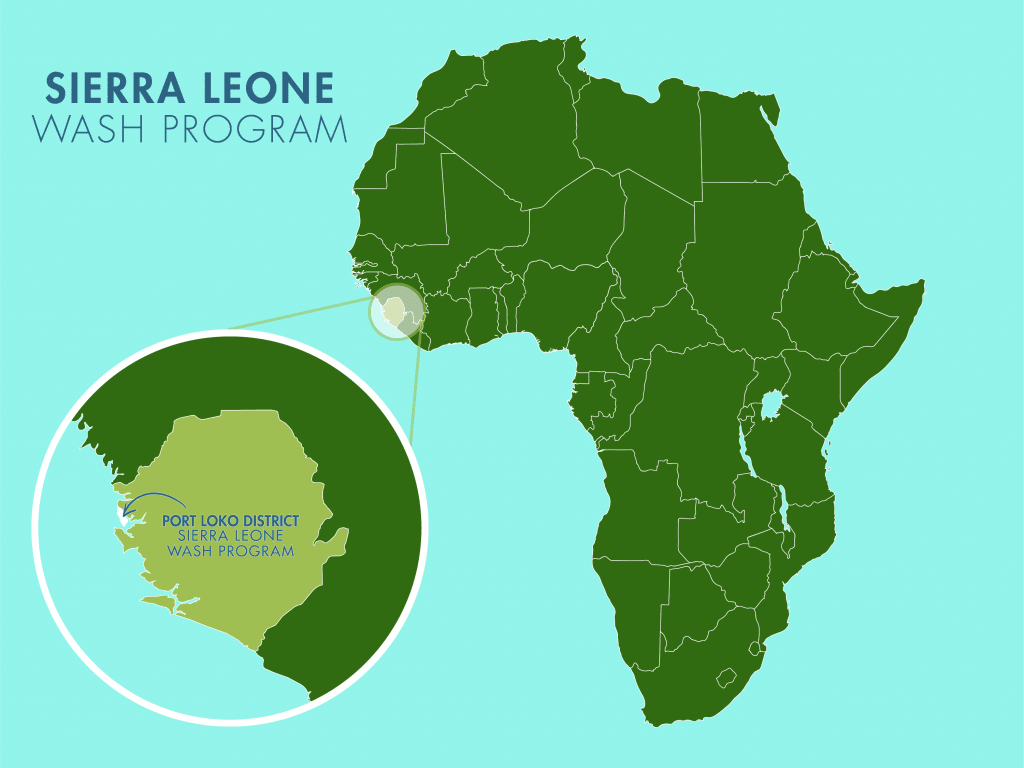Over the years, Holy Cross Catholic Primary has established a strong reputation for academic excellence, producing students who consistently excel in both internal and national examinations. Despite its academic achievements, the school continues to face a serious challenge: the lack of a water source on its grounds. The seven teachers and 381 students must walk long distances to fetch water from community wells or taps located outside the school premises, which are prone to overcrowding and long queues.

Students haul water from the town's water sources back to the school.
The absence of a school water point has created ripple effects on learning and hygiene. Pupils spend valuable class time fetching water, their uniforms become soaked from carrying full buckets, and fatigue often sets in before lessons begin. Teachers struggle to complete the syllabus, and maintaining proper hygiene and sanitation is difficult.
For the pupils, the burden is deeply personal.
Thirteen-year-old Mohamed described his daily struggle: “The school has no water well, and I usually walk long distances to fetch water from outside water wells. The distance is too far, and I will meet people in the queue at the water well. Sometimes they will allow me to fetch water. Also, I may join the queue, and during that time, it will take me [a] long [time] before I can return to school.”

Mohammad collects water from an open well off campus.
Fetching water takes him up to two hours each day. When asked how this affects his schooling, Mohamed said: “It does affect my time at school. In the morning, at about 8:30 am, [it] is devotion time, and I will leave the devotion [to] go for water. By the time I return to school, I have already missed lessons. This happened because of the distance to the water wells, and I must wait for a long time before I can fetch water due to the crowd at the water wells. Also, missing some lessons means a lot to me; I will not be able to get good grades because I am unable to study.”
Despite these challenges, Mohamed dreams of a brighter future.
“I wanted to become a scientist to study the universe and make discoveries. So, I need more time for studying, which will be able to achieve my dream. I will be happy if this project provides a water well in my school," Mohammed said.

When asked how he feels when sent to fetch water, he said: “I feel bad when I am sent to fetch water. Sometimes I meet people at the water wells, and I must wait for them before I can fetch water. I spend a lot of time, and this causes me not to return quickly. Due to this, I will miss devotion and lessons. My uniform gets soaked when I am carrying a drinking rubber bucket on my head [while] walking long distances. I will remove my uniform and allow it to dry before I wear it again. I will be grateful if this project provides a water well in my school, and these water problems will be over.”
The long journeys to fetch water are taking a toll on education. Students miss crucial lessons, teachers cannot maintain consistent class schedules, and the entire learning environment is disrupted. Hygiene practices, such as hand washing and latrine cleaning, are often neglected simply because there is not enough water available.

Pepel Holy Cross Catholic Primary School could transform its environment with a reliable water source that would ensure that students stay in class, teachers complete their lessons, and hygiene standards are improved.
As Mohamed poignantly expressed, having a water point at school would mean far more than convenience—it would mean opportunity: “I will be happy if this project provides a water well in my school, and these water problems will be over.”
Steps Toward a Solution
Schools without reliable, on-premises water access often rely on students to fetch and carry water, leading to rationing and uncertainty about water quality. The water is typically poured into a communal storage tank and used by the entire school. With children carrying water from all different sources, it is also impossible for teachers and staff to know exactly where the water comes from and how safe it is to drink.
A new water point will be located on-premises at the school to ensure accessibility, reliability, and safety for students, teachers, and staff while meeting our school coverage goals. Having water available at the school allows children to drink, wash hands, and use sanitation facilities without leaving school grounds, preventing disruptions to lessons and reducing safety risks. A dedicated source increases water availability, reduces reliance on stored water, minimizes rationing, and ensures confidence in the safety of the water. This means staff and students are healthier, and their lessons aren’t disrupted, contributing to a better education!
Our technical experts worked with the school leadership and local community to identify the most effective solution to their water crisis. They decided to drill a borehole well, construct a platform for the well, and attach a hand pump.
Well
Abundant water often lies just beneath our feet. Aquifers—natural underground rivers—flow through layers of sediment and rock, offering a constant supply of safe water. A borehole well is drilled deep into the earth to access this naturally filtered and protected water. We penetrate meters, sometimes even hundreds of meters, of soil, silt, rock, and more to reach the water underground. Once found, we construct a platform for the well and attach a hand pump. The community gains a safe, enclosed water source capable of providing approximately five gallons of water per minute. Learn more here!
School Education & Ownership
Hygiene and sanitation training are integral to our water projects. Training is tailored to each school's specific needs and includes key topics such as proper water handling, improved hygiene practices, disease transmission prevention, and care of the new water point.
To ensure a lasting impact, we support forming a student health club composed of elected student representatives and a teacher. These clubs promote hygiene practices schoolwide and keep handwashing stations well-stocked. This student-led model encourages a sense of ownership and responsibility.
Safe water and improved hygiene habits foster a healthier future for everyone in the school and the surrounding community.

 Borehole Well and Hand Pump
Borehole Well and Hand Pump
 Rehabilitation Project
Rehabilitation Project
















